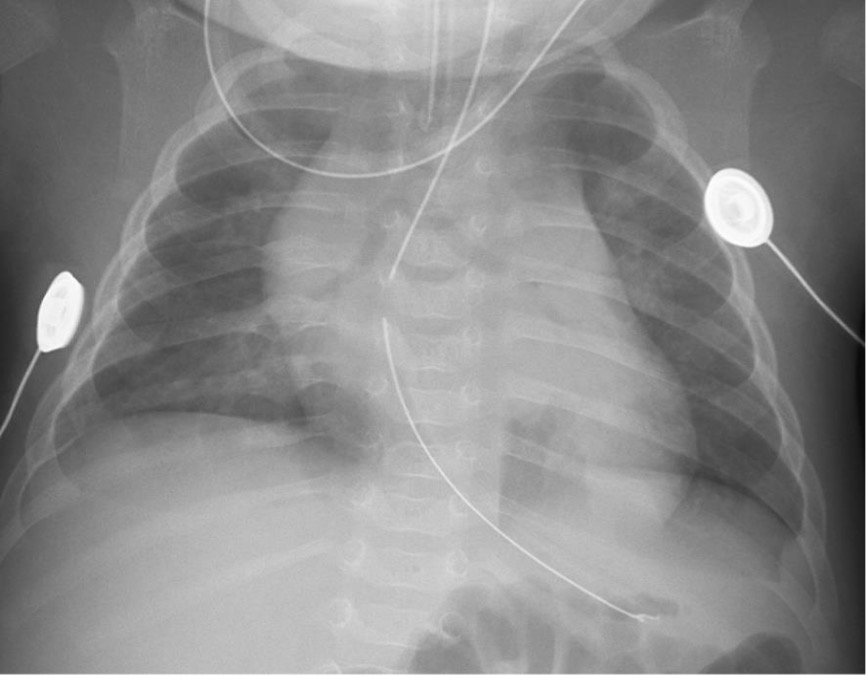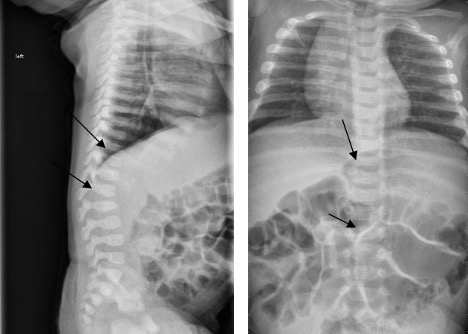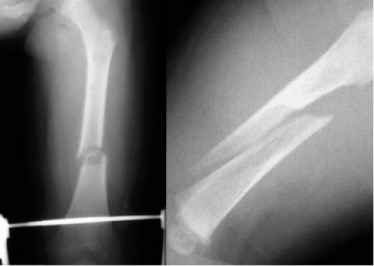By Santa J. Bartholomew M.D. FAAP, FCCM
Fractures are the second most common injury in children who have suffered from child abuse, bruising being the first most common. In children under 3 years old 20% of fractures are abusive injuries. Failure to identify abusive injuries and intervene can have catastrophic results for the child including other more permanent injuries and/or death.
Unfortunately, physical abuse is often not in the differential diagnosis because the history of illness is concealed to hide the abuse. It is beholden on the care provider to approach fracture injuries with suspicion and to thoughtfully assess if the injury and the story are consistent.
Although all fractures must be considered to be abusive while assessing young children in particular there are fractures with very high specificity for abusive injury:
- Posterior rib fractures in infants
- Metaphyseal fractures of long bones: most common long bone fracture in infants who die from child abuse.
- Fractures of the sternum
- Fractures of the scapula
- Fractures of the spinous processes.
Fractures with moderate specificity for abuse:
- Fractures of differing ages
- Epiphyseal plate fractures
- Fractures of digits
- Complex skull fractures
It is beholden on the care provider to approach fracture injuries with suspicion and to thoughtfully access if the injury and the story are consistent.
.




The provider must be cognizant of performing their due diligence. Considering medical conditions that may make a child more vulnerable to skeletal injury such as osteogenesis imperfecta, rickets, preterm birth, scurvy, copper deficiency, Menkes disease, osteomyelitis, other systemic diseases (chronic kidney disease) to name only a few.
Evaluation must include a careful and detailed history including a careful social history, past medical history, lab evaluation to exclude medical causes of fracture. If there are still concerns about the etiology of the child’s injury mandatory reporting is a necessity! The reporter needs to “suspect” or “have reason to believe” that the child has been abused or neglected. Incontrovertible proof is NOT required and may save a child’s life to report suspicion.
References:
Kemp A.M., et.al. Which radiological investigations should be performed to identify fractures in suspected child abuse? Clin. Radiology (2006) 61:723-736
Barsness Katherine, et.al. The positive predictive value of rib fractures as an indicator of nonaccidental trauma in children. J Trauma. 2003;54:1107–1110
Caviglia Horacio, et. al. Pediatric Fracture of the Humerus. Clin Orthopaedics and Related Research 432:49-56
Kriss S, et.al. Characteristics of rib fractures in young abused children. Ped Radiology Dec 2019
Prosser, Ingrid, et.al. How old is this Fracture? Radiologic Dating of Fractures in Children: A systematic Review. AJR: 184, April 2005




